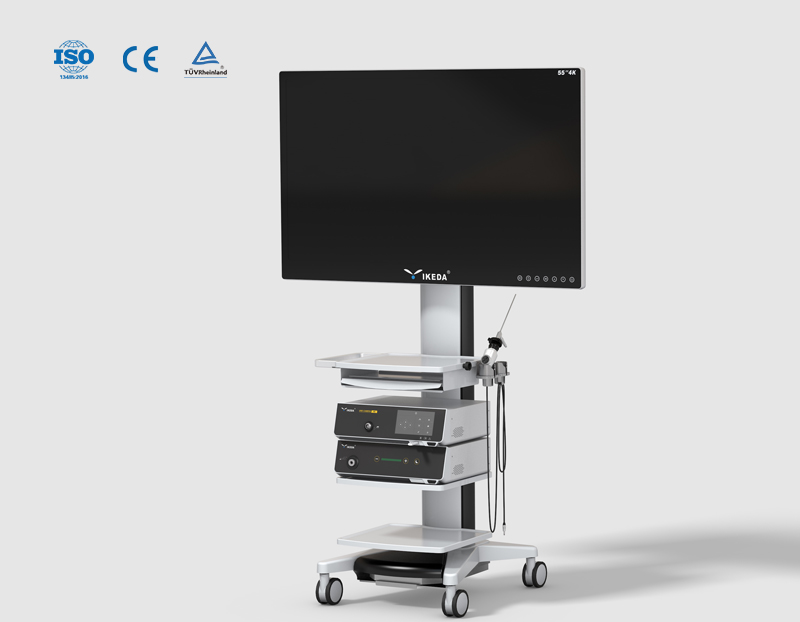Inguinal hernia is a common and frequently-occurring disease in surgery, commonly known as "intestinal gas". With the prolongation of the course of the disease, the hernia will become larger and larger, affecting life, and it is even more dangerous if incarcerated; incarcerated hernia can cause acute intestinal obstruction, and the incarcerated bowel can cause intestinal necrosis, intestinal perforation, or even intestinal perforation if the blood supply is blocked. Infectious shock, threatening the patient's life.
Laparoscopic minimally invasive surgery for various types of inguinal hernia has been quite extensive and mature, and achieved good results. With the development of science and technology, the application and promotion of ultra-high-definition surgical equipment in the field of minimally invasive surgery is an inevitable trend and an inevitable result of technological progress. The 4K ultra-high-definition laparoscopic system is more recognizable than the traditional high-definition laparoscopic system, and has a lower probability of operating errors, which can help surgeons to easily identify the relationship between important anatomical structures and surrounding tissues. In addition, the magnification advantage of 4K laparoscopy can relieve eye fatigue compared with traditional high-definition laparoscopy.

The advantages of 4K ultra-high-definition laparoscopic system in hernia surgery:
(1) Inguinal hernia: The anatomy of the inguinal area is a difficult point in the operation. The spermatic cord, round ligament, reproductive blood vessels, etc. pass through the hernia sac. If the hernia sac is congenital or has been onset for a long time, the hernia sac has a dense relationship with the tissue inside the sac. The dissection is difficult, so the operator's identification of the anatomy is particularly important. Under the 4K laparoscopic camera display system, the relationship between the peritoneum, preperitoneal fascia, transverse abdominal fascia, and preperitoneal fat is clearer, which can guide the operator to avoid entering the wrong level, which is conducive to the stripping of the hernia sac; stripping the hernia sac It is easier to identify the adjacent anatomical structures such as spermatic vessels, vas deferens, etc., and the surgeon can accurately separate the hernia sac to avoid damage to the surrounding structures. At the same time, the anatomical identification of areas such as the crown of death and the danger triangle is clearer, which enhances the safety of the operation.
(2) Incisional hernia or parastomal hernia: The magnification and high-definition field of view of the 4K ultra-high-definition laparoscopic system can more accurately identify the layers of intestinal adhesions, making the separation of intestinal adhesions safer.
(3) Hiatal hernia: It helps to identify the hernia sac and pleura in the mediastinum; it helps to avoid accidental injury to the deep abdominal aorta when suturing the angle of the diaphragm; it helps to protect the vagus nerve.
The application of 4K ultra-high-definition laparoscopic system for surgical operation can provide the operator with a clearer surgical field and vivid picture, and the significantly enhanced realism and sufficient magnification can bring the operator better positioning and orientation, thereby improving the The level of sophistication of the surgery. The delicate anatomical imaging under the 4K ultra-high-definition imaging technology can help improve the operator's anatomical identification, improve the accuracy of surgery, and complete the fine anatomy more smoothly.